By Harshit Khandelwal, Alibaba Cloud Community Blog author.
This tutorial will focus on the more practical side of the machine learning pipeline. First we will take a look at the Scikit-learn library for machine learning, which is one of the most popular library in machine learning, and then we will give a practical demonstration of machine learning algorithms.
Scikit-learn is currently one of the most popular machine learning library in the world. It is easy to use and features several powerful algorithms. It was originally created by David Cournapeau as a 2007 Google summer of code project but later went on to be publically released in 2010 when a team of developers from a research institute in France took the project to new heights. The main language that Scikit-learn is written in is Python, but some of the core algorithms are also written in Cython, which is a combination of C and Python. All of this design helps to ensure the overall good performance of Scikit-learn.
While Scikit-learn is not the only library out there - in fact there are several others and in different languages such as Weka, MLpack, IBM Watson, and TensorFlow - what makes Scikit-learn special is that it was built on top of many other libraries:
More to it, Scikit-learn also provides the following groups of models, all of which are widely used and popular:
So now let's see how machine learning works in Alibaba cloud in connection with Scikit-Learn.
The type of machine learning model that you will develop here is a regression algorithm, where prediction is based on continuous numerical values. At the same time, you will integrate other algorithms already found on Alibaba Cloud. Each algorithm will have an evaluation value. Towards the end of the tutorial you will find few sentence description about each algorithm used.
As the first step in this tutorial, obtain some data that's present in the cloud already. For this, I'm using the farmers data.
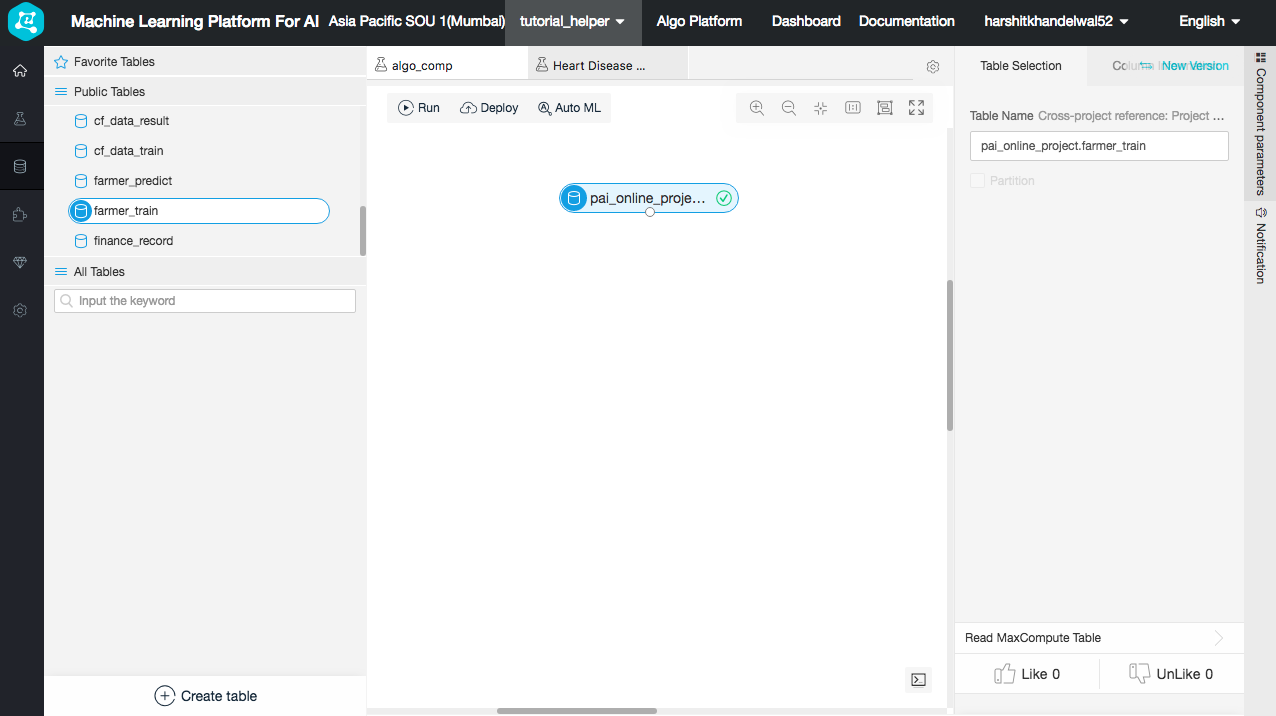
The data is as follows:
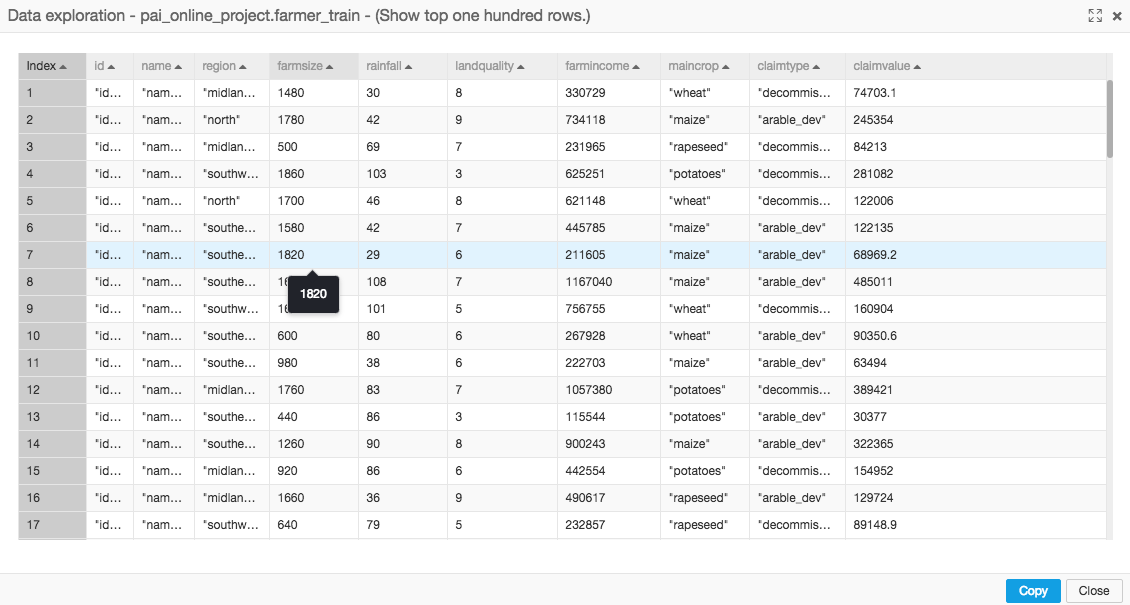
As you can see that the data is a mixture of numerical, categorical and string values. However, we want the categorical values into numerical values (because the algorithms we will use only can take numerical values as input and predict numerical values as output). To do this, let's create a SQL script which is imported from the tools column. This script maps the String categorical values to numerical values.
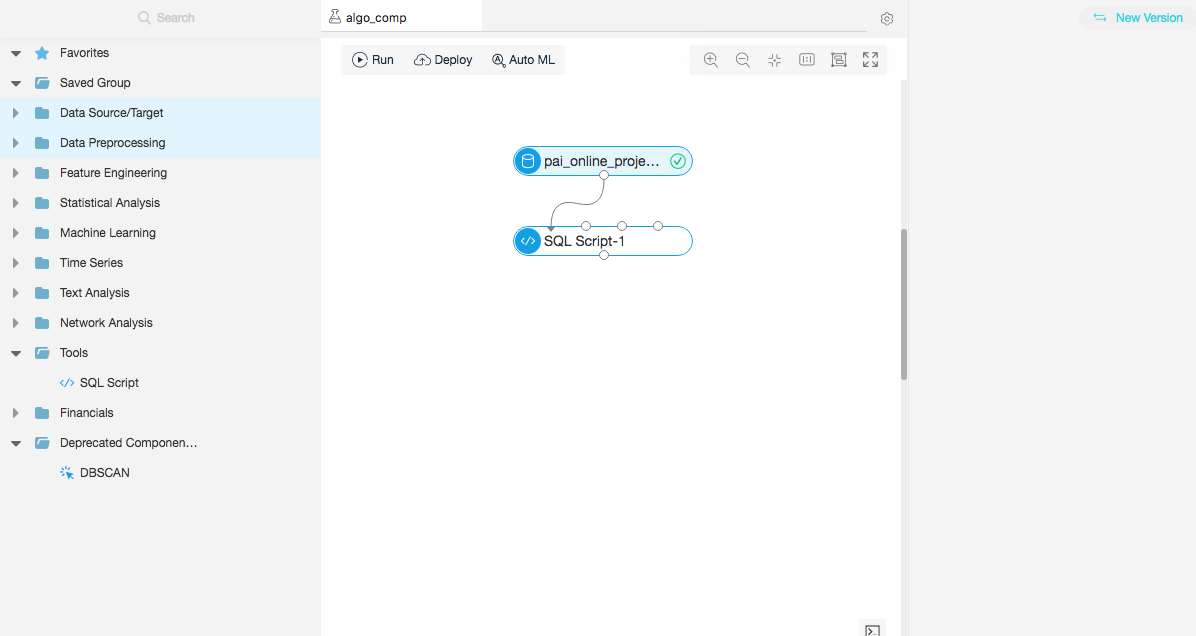
What this script does is it takes the columns values and maps each unique value to a number, and the string value gets replaced by numerical value. So, for example, for 'claimtype' column, wherever the script encounters the value 'arable_dev', the script replaces this value with 0 while any other value being encountered by the system gets changed to 1. The Script is as follows:
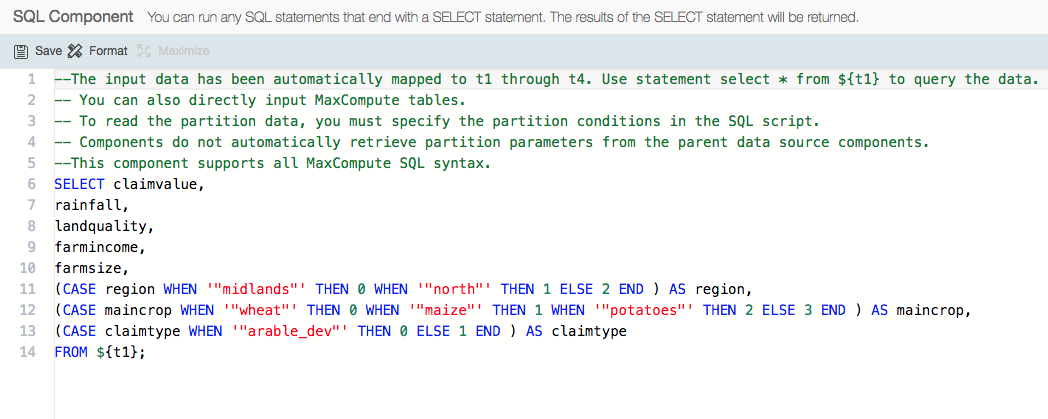
Note that the SQL scripts functionally are not only limited to just changing column types, but they can also can be used for combining various data tables into one, combining columns or creating new ones.
Now let's change the data types and normalize the data because the linear regression algorithm can become more biased when values in the column are larger. After that, let's begin with our first machine learning algorithm named Linear Regression.
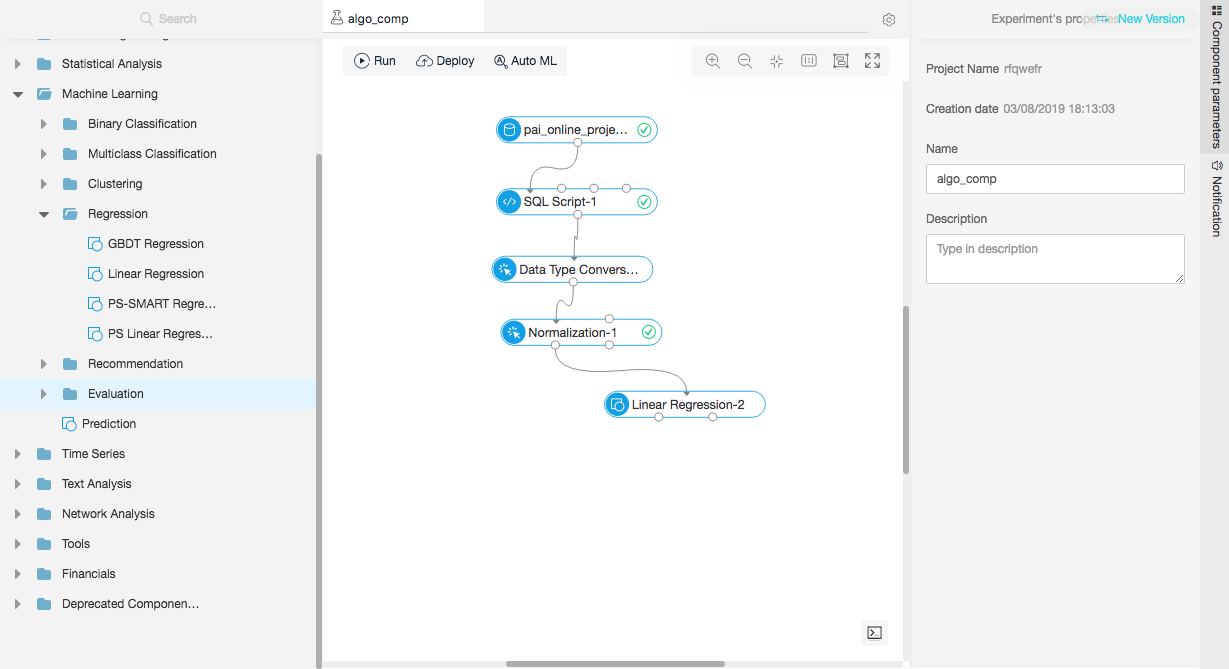
Now upon clicking the Linear Regression node, you can select which columns are feature columns and which one is the target column . In this example given in this tutorial, I am using claimvalue column as the target column while all the rest as the features columns. However, because the Linear Regression model has two output nodes, one that gives the result, and the other that gives the analysis report, remember to click the two little check boxes in the end of parameter tab, otherwise the analysis report will not be generated.
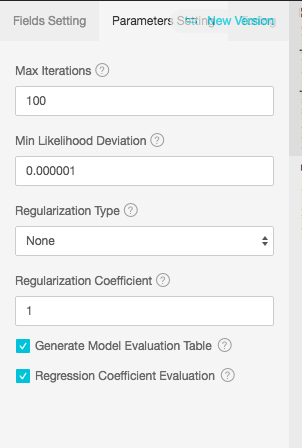
You can use more than one linear regression models by just changing the above mentioned parameters and comparing the results for each model and keeping the best while discarding the rest. The analysis report generated from the second output node of the Linear Regression node is as follows. It provides a detailed explanation about how important each column was in the models prediction.
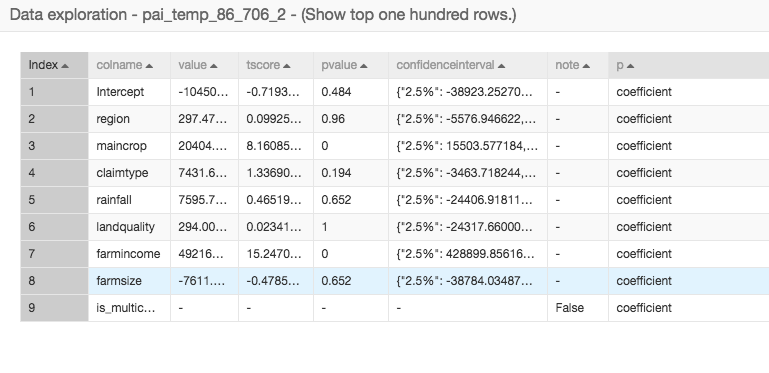
Now we continue to use other regression models that are available in the cloud, specifically GBDT regression, PS Linear Regression and PS-SMART Regression. The selection for target and feature columns can be done for each model separately. However, I recommend that you keep each selection similar for each model so that model comparison can be done easily. As you can see, data can be selected from a previous node and extended to more than one node. Alibaba Cloud can run multiple algorithms on same dataset.
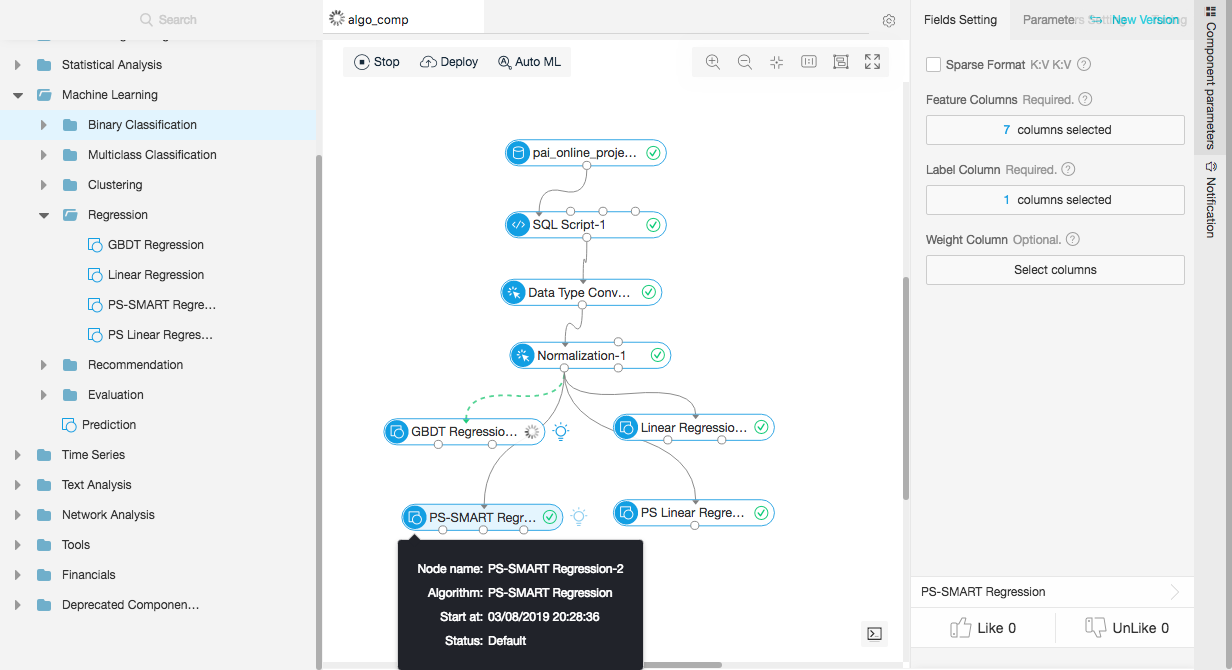
Below is the result from PS Linear Regression. You can obtain the results for each model in a similar way.
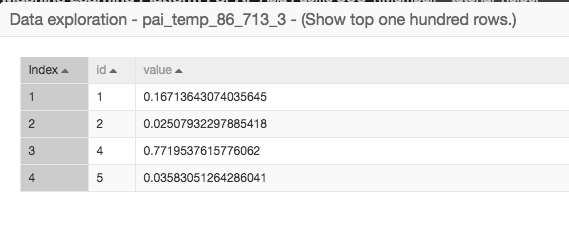
So this part of the tutorial covered how you can use various regression algorithms. Now let's explain what else you can do on Alibaba Cloud in connection with the Scikit-learn library for machine learning.
From the image below this, you can all of the machine-learning related algorithms on Alibaba Cloud. In this tutorial, we have already covered regression, so now let's go over classification, which involves predicting binary, ordinal or nominal output. The algorithms that are available for this type are: Random Forest, Logistic Regression, K Nearest Neighbor (KNN), GBDT Classification, along with few others too.
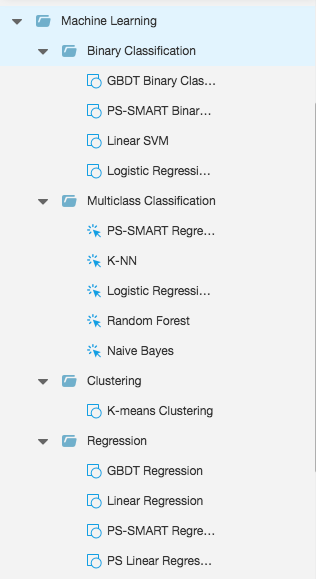
Note that, as you can see from the image above, coverage for unsupervised machine learning models on Alibaba Cloud is limited to K means Clustering. However, there are many other unsupervised machine learning models currently under development.
Here's a short explanation of the classification models available on Alibaba Cloud:
Create Your Own Online Store with PrestaShop and Alibaba Cloud

2,598 posts | 769 followers
FollowAlibaba Clouder - August 12, 2020
Alibaba Cloud MaxCompute - March 20, 2019
Alibaba Cloud MaxCompute - June 22, 2020
Alibaba Clouder - September 2, 2019
Alibaba Container Service - February 17, 2020
Alibaba Clouder - April 22, 2021

2,598 posts | 769 followers
Follow Platform For AI
Platform For AI
A platform that provides enterprise-level data modeling services based on machine learning algorithms to quickly meet your needs for data-driven operations.
Learn More DataWorks
DataWorks
A secure environment for offline data development, with powerful Open APIs, to create an ecosystem for redevelopment.
Learn More GPU(Elastic GPU Service)
GPU(Elastic GPU Service)
Powerful parallel computing capabilities based on GPU technology.
Learn MoreMore Posts by Alibaba Clouder